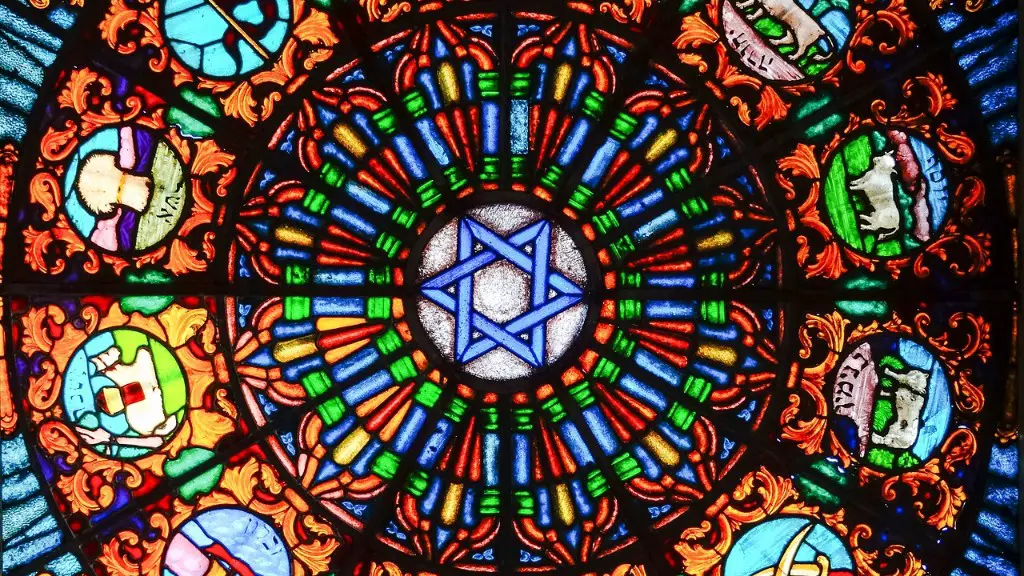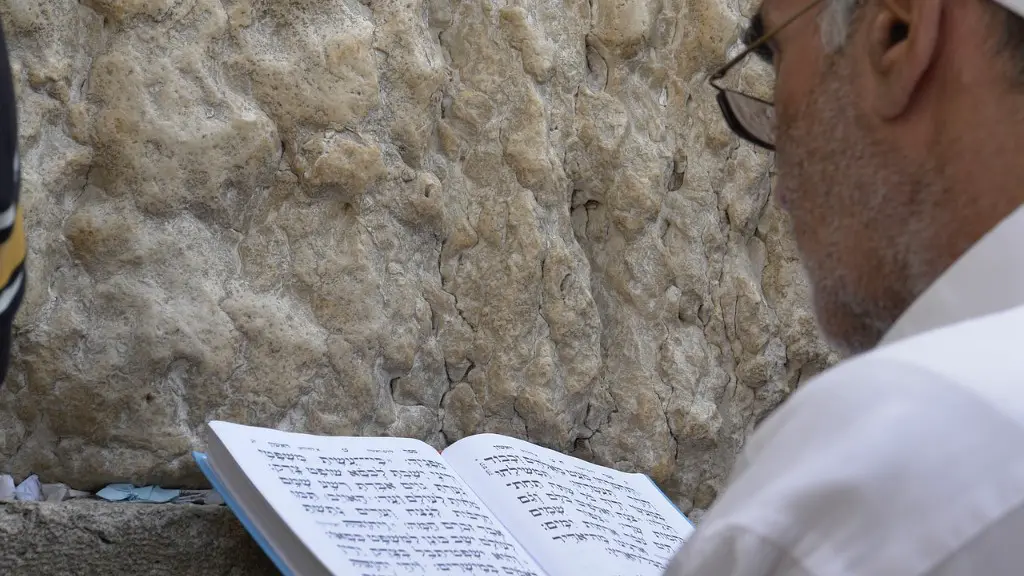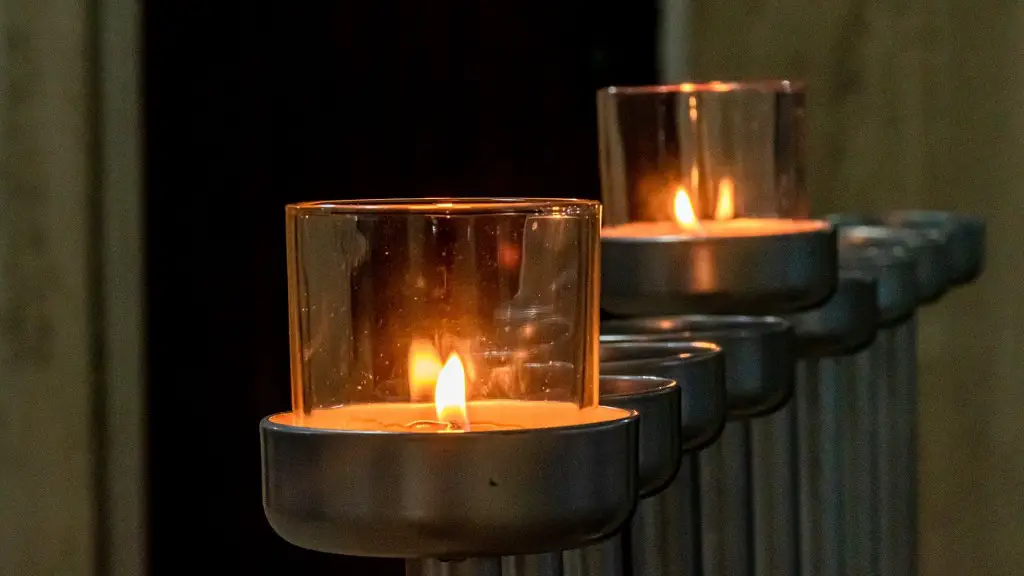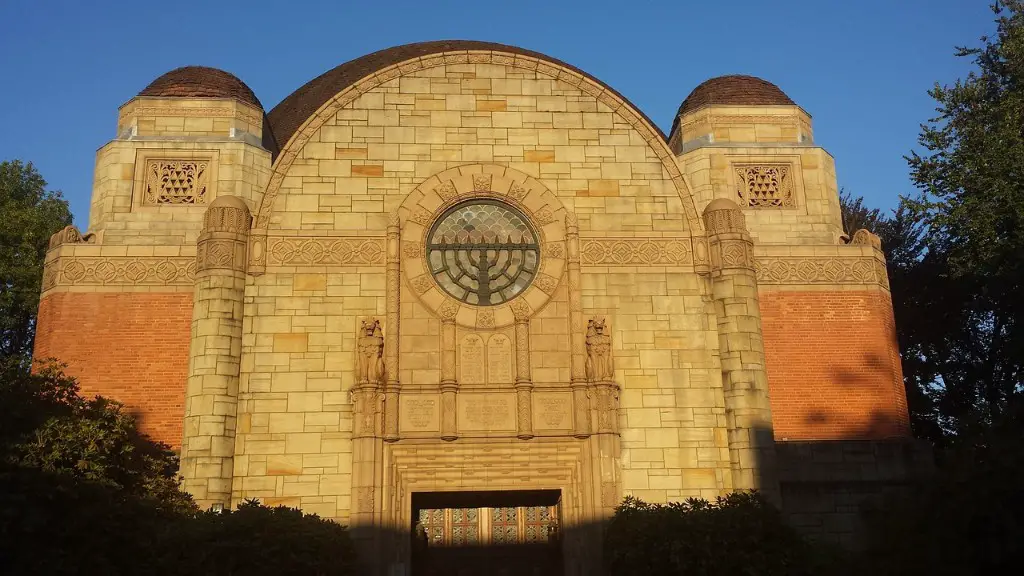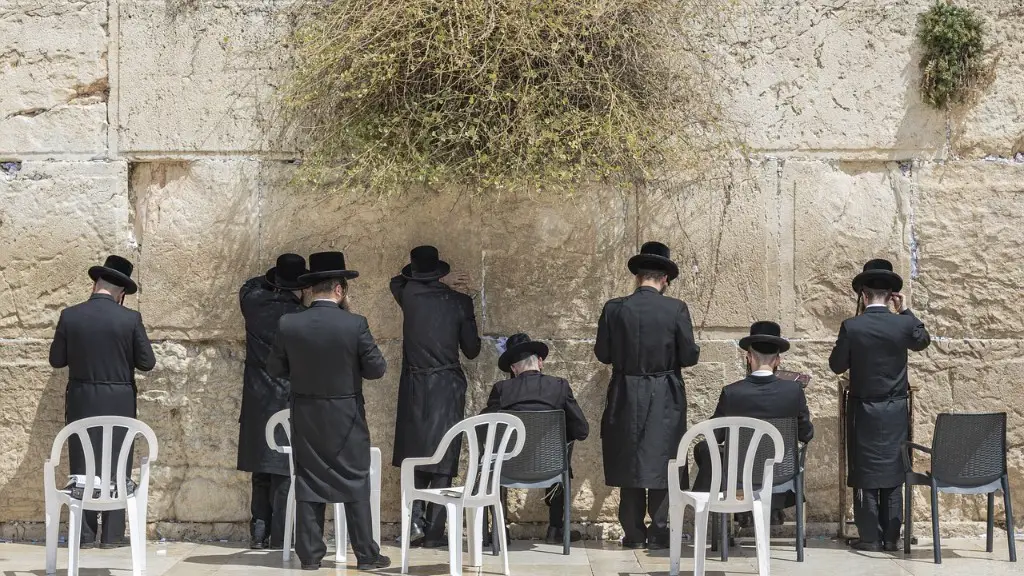Judaism is a religion that has been celebrated around the world for centuries. From the Holy Land in Israel to major North American cities, Jews have been worshipping their faith for generations. The structure of services and the rituals experienced within a synagogue are fundamental to the understanding of Judaism and its role in the wider world. But what exactly is it and where do Jews around the world worship?
Judaism is a monotheistic religion founded on the teachings of Moses and the written Torah. The religion is based on the observation of the 613 commandments, or mitzvot, and is believed to have been established around 3,500 years ago. The central belief of Judaism is that there is only one God, who oversees and is in charge of the universe. Jews practice a wide range of practices and rituals, including prayer, Shabbat observance, and the celebration of religious holidays. Jews also mark the cycles of life with various ceremonies, such as Bar Mitzvah and Bris Milah.
In the Jewish religion, the synagogue is the center of Jewish religious and communal life. Synagogues come in a variety of forms and sizes. Some synagogues may serve a particular branch of Judaism, such as Reform, Conservative, or Orthodox. Others may include a mixture of different branches. Regardless of denomination, synagogues are places of gathering and worship. In some synagogues, the congregation will pray in a certain order by reading from traditional Jewish texts and singing prayers. There are also those that focus heavily on Torah study.
Synagogues may also serve other purposes in the Jewish community. They may host spiritual and educational programs, as well as cultural and community activities. Synagogues are also typically active in political and social issues, such as social justice and civil rights. Synagogues often offer kosher food and provide a place to celebrate life events, such as weddings and funerals.
The primary place of worship for Jews is the synagogue. However, while the synagogue is the most commonly visited place of worship, there are other places where Jews can practice their faith. These include private homes and public venues, such as parks and beaches. Some people may also opt for more creative prayer locations, such as in the mountains or at the ocean. Ultimately, one does not have to be within the walls of a synagogue in order to worship.
Jewish worship also takes place outside of the synagogue. Many Jews observe communal fasting on certain religious days, for example, Yom Kippur. While fasting does not necessarily involve prayer, it does entail a focus on the day’s spiritual significance and can be seen as a type of worship. Additionally, some Jews may practice their faith through individual meditation and study of religious texts.
In addition to the synagogue, there are many ways in which Jews practice their faith and observe their rituals. Despite the diversity of traditions, Jews around the world come together in embraces of love, peace, and unity.
History of Judaism
The origins of Judaism can be traced back to the Jewish people living in the Middle East over 3,500 years ago. During this time, the Jews developed a unique set of religious and cultural beliefs, known as the “Torah”, which they believed contained the laws of God. Over time, the Torah evolved into the foundation of the Jewish faith and a guide for ethics, morals, and spiritual practices. By the 1st century CE, the teachings of the Torah and the religion of Judaism was widely accepted in the Roman Empire and beyond.
Throughout its history, Judaism has undergone many transformations. In the medieval period, Jewish communities were driven to the peripheries of Europe and the Middle East, where they remained isolated and largely cut off from the rest of the world. The 19th and 20th centuries saw a major resurgence of Jewish spirituality and culture, with the establishment of Israel and the growth of the Zionist movement. Today, the majority of the world’s Jews live in Israel, but many also continue to practice their faith elsewhere around the globe.
Although there is a common core of belief and practice shared by Jews, there is a great deal of diversity within the religion. This can be seen in the wide range of denominations and traditions, from ultra-orthodox to modern, progressive denominations. In this way, Judaism is a “living” religion that is constantly evolving, adapting to the changing needs and demands of the modern world.
Rituals and Practices in Judaism
Judaism is centered around a set of rituals and practices that have remained central to the religion since its earliest days. These include prayer, fasting, and the reading of Torah. Other practices such as circumcision, dietary laws, and Shabbat observance are also important in the life of a practicing Jew. These rituals and practices serve as reminders of the faith and a way to connect with the divine.
One of the most important rituals in Judaism is prayer. Jews are required to pray three times a day, and many also recite additional prayers throughout the day. Prayer is viewed as an opportunity for reflection, praising God and asking for His favor. Synagogue services also involve the recitation of a specific set of prayers. Other rituals include the recitation of blessings over the Sabbath candles and kiddush, a prayer said over the first cup of wine during the Sabbath meal.
Fasting is also an important ritual in Judaism, with many prescribed fasts observed throughout the year. These can range from the 25-hour fast on Yom Kippur, the “Day of Atonement”, to shorter or longer fasting periods. Some fasts may involve abstaining from food, while others may involve abstaining from work or other activities. On fast days, the focus is not only on abstaining from the forbidden activities, but also on reflecting on one’s life and repenting for wrongdoings.
The observance of Shabbat, or the Sabbath, is also of significant importance in Judaism. On Fridays at sundown, Jews stop all work and recreational activities, and reflect on the holiness of the day. This includes the recitation of additional prayers, such as the Havdalah, which marks the end of the Sabbath. Many Jews also observe the laws of kashrut, or kosher eating, and the designation of certain times for study and contemplation.
Judaism and Modern Life
Today, Jews around the world live according to a wide range of observances and customs. For some, following the mitzvot and rituals is seen as a way to connect to their faith and to God. For others, there is a recognition that some of the laws may no longer be relevant in the modern age, and therefore they take a more relaxed approach to their practice. Despite this, it is still possible to find a connection to the divine, even in the midst of the daily grind of modern life.
The synagogue plays an important role in Jewish life, providing a place of worship and sanctuary as well as a source of spiritual guidance. As a vibrant hub of the community, synagogues often offer a lively array of lectures, classes, and discussion groups, ensuring that the tradition of Jewish learning will remain strong. More than ever, Jews around the world will find inspiration and strength in their faith as part of a diverse and thriving Jewish community.
Rabbi and the Role of the Priest in Judaism
Rabbis play a central role in the life of the Jewish community. They are responsible for teaching the laws and traditions of the faith, leading the services, and providing religious guidance. Rabbis may also officiate at life cycle rituals such as weddings and funerals. Additionally, many rabbis serve as active members in their respective Jewish communities, advocating for social justice and minority rights.
Historically, the role of the priest was to lead sacrifices and various religious ceremonies. Priestly duties eventually transitioned over to the role of the rabbi in Jewish practice. This is due to the fact that after the destruction of the Second Temple, animal sacrifice was no longer an option. As a result, the role of the priest was largely replaced by the rabbis. To this day, rabbis continue to play a vital role in the life and practice of Judaism.
Hasidism and the Chasidic Movement
Hasidism is a branch of Orthodox Judaism that appeared in the 18th century Poland. The movement views the essence of spiritual life as a deep emotional relationship with God. It also emphasizes the importance of joy in the practice of Judaism, which is expressed through music, dance and storytelling. In the 19th century, the Chassidic movement began to spread throughout Europe and eventually to the United States. The movement has since become a major force in the practice of Judaism around the world.
The central figure of the Chasidic movement is the Rebbe, or spiritual leader. The Rebbe is responsible for leading the community both spiritually and politically. Additionally, the Rebbe serves as an intermediary between the Jewish people and God, and provides guidance to his followers in matters of religious law and belief. The Rebbe is also seen as a living example of a true, holy person and serves as a model of righteous behavior.
Hasidism has become an influential part of Jewish practice around the world. Its emphasis on joy and spiritual love has resonated with many Jews, who find comfort and solace in the message of the Chasidic movement. The teachings of the movement are seen as inspirational and relevant in today’s world, providing guidance and meaning to those who practice Judaism.
